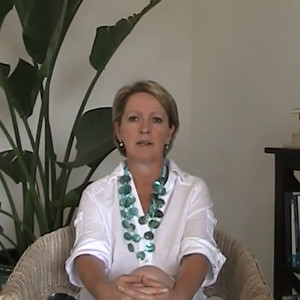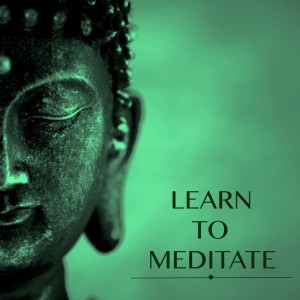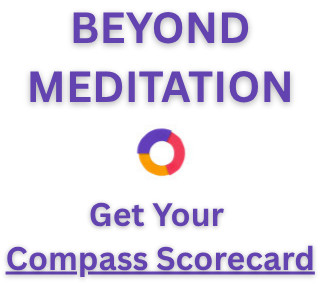Meditation for Beginners, Meditation Techniques
Introduction from Trish, SydneyMeditationCoach.com
 “I open up meditation with the exploration of several meditation techniques and styles without, of course, religion being the focus the practice. Real meditation is not exclusive to one source. Meditation is the natural, innate exploration of an individual’s consciousness. Meditation put simply, is the new common sense. It should not be restricted by one teaching or technique. Atheists as well as those who believe in a God – can of course meditate just as effectively as each other. After all, consciousness has no religion. Many people from all walks of life are taking courses with me learning meditation via Skype too.”
“I open up meditation with the exploration of several meditation techniques and styles without, of course, religion being the focus the practice. Real meditation is not exclusive to one source. Meditation is the natural, innate exploration of an individual’s consciousness. Meditation put simply, is the new common sense. It should not be restricted by one teaching or technique. Atheists as well as those who believe in a God – can of course meditate just as effectively as each other. After all, consciousness has no religion. Many people from all walks of life are taking courses with me learning meditation via Skype too.”
The main objective of meditation is to achieve focus and calm the mind, ultimately achieving a more elevated level of consciousness and inward peace. It might be quite amazing to discover that meditation can be done anyplace and anytime, giving yourself the ability to achieve a feeling of serenity and quietness regardless of what’s happening within your vicinity. This editorial is aimed at acquainting you with the fundamentals of meditation, empowering you to start your adventure on the way to illumination and happiness.

1. Pick a quiet location.
It is ideal to choose a quiet and peaceful environment to practice meditation. This is in order to be able to concentrate only on the current objective and not have your mind drawn to external distractions. Look for spots where you will be alone and not hindered for the span of your meditation – irrespective of if it’s just for five minutes or 30 minutes. You don’t require a spacious environment, as a small room or maybe your cubicle at work can serve admirably well, provided it’s a private spot.
For individuals learning to meditate, it’s particularly necessary that you stay away from any distractions. Switch off radios, television sets, unhook the telephone or other loud machines. It is preferable to not listen to music, however if you do, choose quiet, rhythmic and mellow tunes, so as to avoid breaking your focus. Another idea is to switch on a little water fountain because the sound of running water can be quite relaxing.
Know that your spot of meditation does not have to be totally quiet, so there ought to be no compelling reason to use earplugs. The sound of a dog yapping or a lawnmower working nearby shouldn’t ruin a successful meditation. Indeed, awareness of such commotion, yet not giving them a chance to rule your connection to your inner peace is a crucial part of an effective meditation.
Outdoor meditation works quite well for some individuals. So long as you are far away from bustling highways or other similar sources of noise, you can discover quiet beneath a tree or sitting on the green grass in a peaceful spot in your garden.
2. Wear comfortable garments.
A leading objective of meditation is to quiet the brain and go within and find the silence and inner peace. This can be hard to achieve on the off chance that you are dressed in restrictive garments which can cause you to feel uncomfortable. Aim to wear loose-fitting garments while meditating and ensure you take off your footwear.
Dress in a cardigan or pullover if you anticipate meditating in a cool spot. On the off chance that you don’t, the impression of being cold while learning meditation will dominate your awareness and you may be distracted.
In the event that you are in the workplace, or some place that you can’t undoubtedly put on something else, do your best to ensure you are as comfortable as would be prudent. Remove your coat and shoes, open the neckline of your shirt or chemise and take off your belt.
3. Choose how long you need to meditate.
Prior to starting, you ought to choose for how long you want to meditate. Although numerous veteran meditators suggest twenty-minute sessions twice daily, amateurs can begin by practicing five-minute sessions, once per day.
Likewise, you ought to attempt to meditate at a specific time daily, whether its 15 minutes after daybreak, or five minutes of your lunch break. Regardless of what time you pick, aim to permanently incorporate that time for meditation into your daily schedule.
When you have chosen a time span, ensure you keep to it. Don’t simply surrender since you feel as if it isn’t effective. It will require some serious energy and practice to accomplish effective meditation, at this moment, the most crucial aspect is to continue making attempts.
In spite of the fact that you will need to monitor your meditation time, it is impractical to be continually watching the time. Consider setting a short alarm to notify you once it’s time to stop, or schedule your practice to end with a specific occurrence, for example, your spouse waking up, or the sun reaching a specific spot on the wall.
4. Stretch out
The act of meditation necessitates sitting still for a specific time frame, so it’s necessary to reduce any pressure or stiffness before starting. Investing several minutes in light exercises such as stretching can truly relax you and get both your body and soul ready for meditation. It will likewise keep you from concentrating on any aching spots as opposed to calming your mind.
Also, stretch your shoulders and neck, particularly when you’ve been working on a PC, and remember your lower back. Extending your legs, especially those on the inner thigh, can be useful when assuming the lotus position during meditation.
5. Sit in a comfortable position.
Just as the expression says, it is necessary that you are relaxed while meditating, which is the reason, sitting in the best position is very important. You can sit in a chair which supports your spine so that you could easily sit in the chair comfortably for any length of time.
Or … you can observe the custom of sitting atop a pad on the floor, assuming a lotus or half-lotus position. If your legs, lower back and hips are exceptionally adaptable, the lotus stance aims to bow your lower back and keep you from relaxing your torso around the spine. Pick a stance that permits you to be relaxed while sitting straight and tall.
Be that as it may, you can likewise sit and not fold your legs, on a pad, seat, or meditation chair. Your pelvis should be angled forward enough for your spine to be positioned over the two hard discs in your rear end, the points that hold your weight. To angle your pelvis into the ideal position, sit on the front end of a padded seat, or put a 3 or 4 inches (7.6 or 10.2 cm) thick pad beneath the back legs of a seat. Meditation seats are typically constructed using a bent seat. If your seat is not, place an object beneath it to angle it forward between a half inch and an inch.
The most critical aspect is that you’re comfy, balanced, and your torso is adjusted so that your spine carries the greater part of your weight from your waist up.
Angle your pelvis forward. Afterward, beginning from your butt, pile up your spine vertebrae, with the goal that they are placed one on top of the other and carry the entire weight of your head, neck and torso. Practice is needed to discover the position that permits you to balance your entire middle fully, needing just a slight exertion to keep up your balance. At whatever point you feel strained, relax the spot. On the off chance that you can’t relax that area without hunching, check the arrangement of your stance and try to re-adjust your middle so that the spot can be well balanced.
The customary hand position includes resting your hands, palm faced upwards in your lap, with the right hand placed on the left. In any case, you can likewise simply lay your hands on your knees or drop them to your sides, whichever stance you desire.
6. Shut your eyes
Meditation can be practiced with either open or shut eyes, however as an amateur it might be more ideal if you started out keeping your eyes shut while meditating. This will shut out any outside visual incitement and keep you from getting sidetracked as you concentrate on focusing your mind.
When you have become accustomed to meditation, you can have a go at rehearsing with open eyes. This is a useful point on the off chance that you discover you are either dozing off or focusing too hard with your eyes shut, or in the event that you are having unsettling mental pictures (which is experienced by a small number of individuals).
In case you keep your eyes open, you should keep them “soft”, by not concentrating on anything specifically. Notwithstanding, you would prefer not going into a trace-like state either, the objective is to feel comfortable and aware at the same time.
Meditation Practices
7. Concentrate on your breathing
The most fundamental and all-inclusive of all meditation methods, breathing meditation is an excellent spot to begin your practice. Choose an area over your navel and in your mind, concentrate on that area. Be mindful of the rising and falling of your midriff as you take in and out air. Don’t attempt to change your pattern of breathing, simply inhale steadily.
Attempt to concentrate on your breathing and just your breathing alone. Try not to concentrate on your breathing or come to any conclusion about it (such as, that the last breath was longer than the present one), simply endeavor to be aware and conscious about it.
A few mental pictures which may be of assistance to you are: envisioning a coin resting on the area over your navel, rising and falling in unison with your breath; envisioning a float drifting in the sea, swaying here and there with the lull and swell in your breathing; or envisioning a lotus flower resting in your gut, spreading out its petals with each breath you take.
Try not to stress if your mind begins to deviate – you are an amateur and, same as other things, turning out to be great at meditation requires effort. Simply try again to concentrate your mind on your breathing and attempt to clear your head. Block out the noise and endeavor to think of no other thing.
8. Clear your mind
To meditate successfully, you should concentrate on one thing at a time.
In case you’re a learner, it may be more ideal to concentrate on one thing, either a visual item or a mantra. Veteran meditators make attempts to clear their minds totally.
9. Repeat a mantra
Another popular type of meditation is, mantra meditation, which includes repeating a specific mantra (a word, sound or expression) again and again, until your mind is calm and you enter a deep thoughtful state. The mantra is yours to choose, the length of it should be simple to memorize and repeat.
A few of the favorable mantras to begin with incorporate words like peace, one, serene, quiet, and silence. In the event that you wish to utilize more customary mantras, you can utilize “Om” which symbolizes ubiquitous awareness, or the expression “Sat, Chit, Ananda” which signifies “Existence, Consciousness, Bliss”.
In Sanskrit, the term mantra signifies “instrument of the mind”. The mantra is a tool which makes vibrations in the psyche, permitting you to separate from your musings and access a more profound level of cognizance.
While meditating, noiselessly repeat the mantra again and again to yourself, permitting the word or expression to echo through your being. Try not to stress if your thought strays, simply refocus your concentration and go back to repeating the word or phrase.
As you venture into a more profound level of mindfulness and cognizance, it might be too much to keep repeating the mantra.
10. Concentrate on a single visual item
Same as using mantras, you can utilize a single visual item to focus your mind in order to achieve a level of more profound awareness. This is an acknowledged type of open-eye meditation, which numerous individuals find to be more straightforward when there is a focal point to concentrate on.
The visual item can be any object of your choosing however lots of individuals see a lit candle flame as especially charming. Other conceivable items are flowers, gems, and photographs or statues of celestial beings, for example, the Buddha.
Arrange the item at eye level, to avoid you straining your eyes or neck to see it. Concentrate on the item until your secondary vision begins to diminish and the item fills your vision.
When you are completely focused on the item, with no external distractions penetrating your mind, you ought to experience a feeling of deep calm.
11. Rehearse visualisation
Visualisation is also a common meditation procedure, which is an act of making a serene spot in your mind and exploring around it, until you achieve a state of ultimate serenity. The spot can be anyplace of your choosing, but it ought not to be altogether real, it ought to be special and modelled to your liking.
The spot you imagine could be a sunny, sandy shoreline, a flower-filled glade, a quiet garden or a living area with a lit fireplace. Whatever spot you pick, make it your safe haven.
When you have entered your safe haven, feel free to explore. There’s no compelling reason to “make” your environment, they are already in existence. Permit them to surface to the front of your mind.
Absorb the sounds, sights and fragrance of your environment; experience the exhilarating breeze against your face, or the warmth of the flames on your skin. Explore the surroundings for whatever length of time that you wish, permitting it to actually grow and turn out to be more real. Once you are prepared to exit, draw a couple of full breaths, and then open your eyes.
Be aware that you can return to this exact spot whenever you visualise during meditation, or if you choose, create another setting. Any setting you make will be exclusive to you and an impression of your individual identity.
11. Do a body check.
A body check includes concentrating on every individual part of the body one after the other and intentionally calming that part. It’s a basic meditation procedure which permits you to calm the mind as you calm the different parts of the body.
Shut your eyes and choose a body part to start on, for the most part the toes. Focus on any vibrations you feel in your toes, and endeavor to calm any tight muscles and relax any strain or rigidity. When the toes are completely calm, proceed onward to your feet and redo the calming technique.
Move on to your body, climbing upwards from the feet to calves, knees, thighs, butt, hips, guts, mid-section, back, shoulders, arms, hands, fingers, neck, face, ears and then to the top of your head. Use as much time as you need.
When you have finished the calming of every single part of the body, concentrate on your body in general and take pleasure from the feeling of tranquility and detachment you have accomplished. Concentrate on your breathing for a few minutes before leaving your meditation session.
12. Attempt heart chakra meditation
One of the seven chakras or energy centers, the heart chakra is situated inside of the body. It is situated within the central region of the chest and is linked with compassion, love, peace and acknowledgment. The Heart chakra meditation necessitates reaching these feelings and exuding them into the universe at large.
To start, shut your eyes and rub the palms of your hands against each other to make energy and warmth. Next, put your right hand on the central region of your mid-section, on top of your heart chakra, and put the left hand over the right.
Draw a full breath and as you breathe out, say “yam”, which is the vibration that is connected with the heart chakra. While doing this, envision a sparkling green energy emanating from your chest into the palms of your hands.
This green energy incorporates the life, love and any other positive feelings you are witnessing right then and there. Once you are done, extend your hands from your chest and permit the energy to leave your palms, conveying your love to your friends and family and the world at large.
Feel your body from within. Are you able to feel the energy field within your body, particularly in your legs and arms? In the event that you don’t feel it, it’s okay. In any case, think: How is it we can move the various body parts? It’s the energy field that streams within our being. Centering your concentration on that energy field won’t merely aid you to remain in the present but additionally aid you to associate with your Being and stream of life inside you.
12. Attempt walking meditation
Walking meditation is a substitute type of meditation which necessitates watching the movement of your feet and being conscious of the association your body has with the earth. In case you anticipate practicing lengthy sessions of seated meditation, it is best to split them up and do some walking meditation in between sessions.
Pick a peaceful area to perform your walking meditation, with as little distractions as would be prudent. It doesn’t need an excessively huge area; however you ought to have the capacity to stroll no less than seven paces in a direct line before making a turn around. Take off your shoes, if feasible.
Maintain a forward eye contact with your head held high, and your hands fastened together before you. Take a moderate, conscious stride with your right foot. Disregard any feelings or sensations in the foot and attempt to focus on the act itself. Subsequent to taking the main stride, allow a few seconds prior to taking the second one. Just a single foot ought to be moving at any specific moment.
Once you get to the far end of your path, stop totally, with both feet in the same line. At that point, spin on the right foot and face the way you came from. Now start walking the other way, still in the same moderate, premeditated movements as earlier used.
While performing the walking meditation, endeavor to concentrate on the feet movement alone, just as you concentrate on the rising and falling of your breath when practicing the breathing meditation. Attempt to clear your mind and get to be mindful of the association between your foot and the earth underneath.
Meditating in Everyday Life
14. Practice awareness in your ordinary life.
Meditation isn’t necessarily limited to merely distinguished practice sessions alone, but you can likewise perform the sessions during your day to day endeavours.
For instance, when feeling stressed, endeavour to commit a couple of seconds to concentrate exclusively on your breathing and rid your mind of any negative feelings or considerations.
You can even repeat awareness while you eat, getting to be mindful of the nourishment and of the sensations you feel while eating.
Regardless of what activities you indulge in your everyday life, whether it’s sweeping the floor or working on a computer, endeavour to be more mindful of the movements of your body and how you feel at that particular time. This is mindful living.
15. Emulate a healthy way of life.
A healthy way of life can add to more successful and positive meditation, so endeavour to eat well, exercise well and rest enough. You ought to likewise abstain from watching an excessive amount of TV, or either drinking or smoking prior to meditation, as such things can deaden the brain and keep you from accomplishing the level of focus needed for an effective meditation.
16. Study spiritual books
In spite of the fact that it’s not for every individual, a few of them have observed that reading spiritual works can assist them to comprehend meditation more profoundly and motivate them to attempt to achieve inward peace and divine understanding.
A few great books to begin with are; The Nature of Personal Reality by Jane Roberts, A Profound Mind: Cultivating Wisdom in Everyday Life by the Dalai Lama, One-Minute Mindfulness by Donald Altman and “A New Earth” by Eckhart tolle.
If you like, you can select any pieces of knowledge that has any impact on you from any religious or holy books and meditate on them on your next session of meditation.
17. Attend a guided meditation class
In the event that you are uncertain about where to start meditating at home, it might be a smart move to first attend a guided meditation class with an accomplished educator.
Meditation classes are available for practically all sorts of meditation techniques, however you can likewise attempt to embark on a divine retreat where you’ll be afforded the opportunity to test distinctive sorts of meditation techniques and discover which one best suits you.
18. Endeavour to meditate at the same time each day.
It is necessary that you endeavor to practice your meditation at the same time every day. By so doing, you will be able to easily incorporate meditation into your regular routine and you will feel its advantages a great deal more.
Daybreak is a great time to meditate, prior to filling your mind with the hassles and stresses of the day.
It isn’t ideal to meditate right after consuming a meal, as you might feel uncomfortable and this will interfere with your focus because of the digestion processes.
19. Know that meditation is a journey.
The reason for meditation is to get the mind to relax, accomplish inward calmness and, in the end, achieve a higher divine level, usually referred to as “Being”.
In any case, you need to understand that it might require practicing for many years in order to attain the level of mindfulness or higher cognizance attained by monks and yogis. This does not make any difference.
Meditation is a trip, similar to hiking a mountain, where each step along the path of illumination carries you nearer to the peak.
When taking your initial steps, you shouldn’t be exceptionally worried with the nature of the meditation itself. So far as there is a feeling of calmness, contentment and happiness at the end of your session, you are assured that your meditation was successful.
Note from Trish: With the release of a backlog of lifetime of stress, sometimes you may be overwhelmed by that. Sometimes a person’s situation can change immediately with a meditation and much for the better, but if you feel disturbed, seek a counsellor or psychologist.




